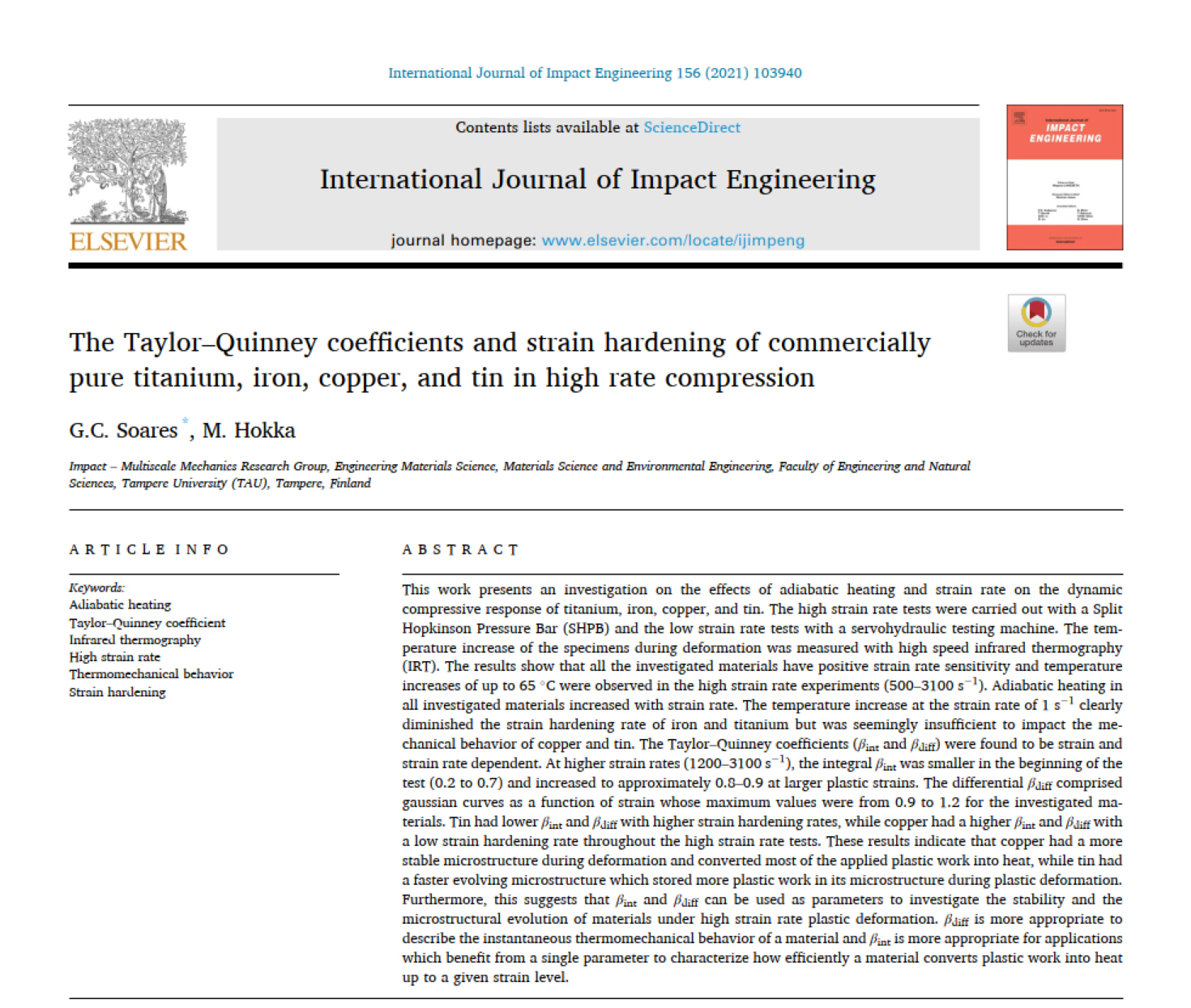The rate at which materials convert plastic work into heat during plastic deformation has interested material scientists for almost a century, and although it has been often assumed to be a constant 0.9. However, recent studies have suggested that not only can it be different, but it is also a function of the material, strain, strain rate, and loading mode. This energy conversion rate is often referred to as the Taylor–Quinney coefficients. Considering that the fraction of plastic work which is not converted into heat is stored in the microstructure during plastic deformation, this rate can also be used to indirectly investigate the microstructural evolution of a material. As strain hardening parameters also describe the rate at which a material is evolving with plastic deformation, in this work they were used in conjunction with the Taylor–Quinney coefficients to investigate the thermomechanical behavior of four different metals (titanium, iron, copper, and tin).
In general, the results showed that the materials stored more energy in their microstructure at low strain values, and the amount of plastic work which was released as heat increased with plastic strain up to a saturation point in which the Taylor–Quinney coefficients seemed to stabilize. This critical strain in which saturation was reached decreased with an increasing strain rate. Both the Taylor–Quinney coefficients and the strain hardening parameters lead to similar qualitative conclusions about the stability of a material microstructure during plastic deformation. Copper seemed to convert most of the plastic work into heat and showed little to no strain hardening, while tin displayed extensive strain hardening at a first strain hardening stage which was also accompanied by most energy being stored in the microstructure.
If you would want to learn more about how intricate the energy conversion in materials can be, you can find more about it in this open access publication through the following link: https://doi.org/10.1016/j.ijimpeng.2021.103940

